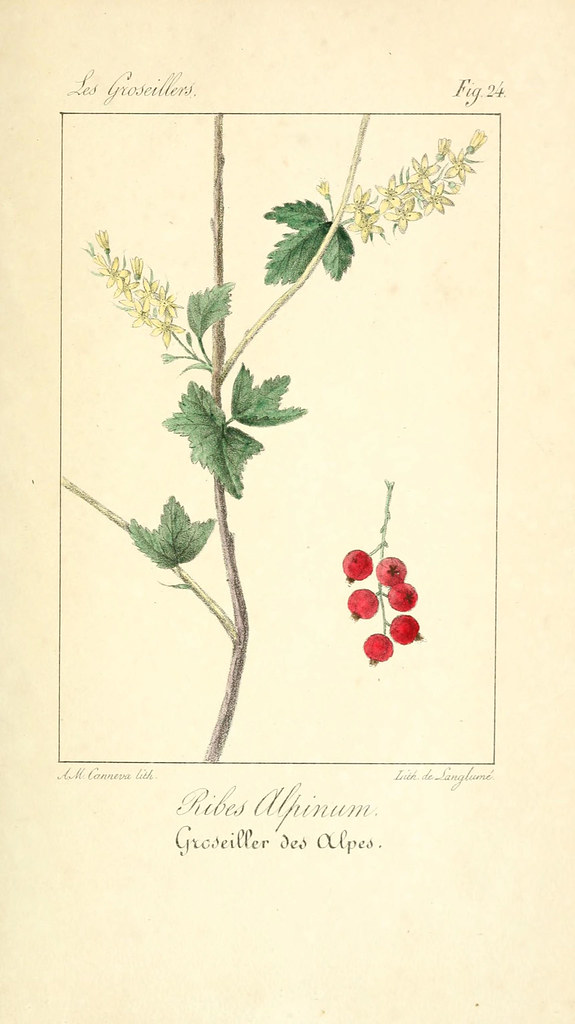#ribes
Text
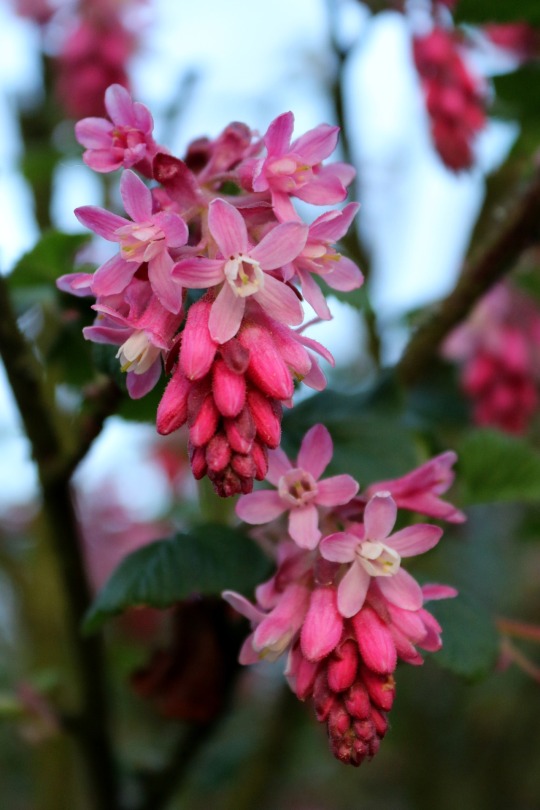
Ribes Sanguineum (Flowering Currant)
#photographers on tumblr#nature#flowers#spring#red#pink#floral#flores#primavera#rojo#flowering currant#ribes#ribes sanguineum#currants#vertical#original photographers#original photography
192 notes
·
View notes
Text

For Violet, a myth
#art#illustration#printmaking#linocut#linoleum#rattlesnake#snakes#herpetology#ribes#coyote#reliefprint#california#nature#bay area#mendocino#sonoma#ink#mokuhanga#dreams
155 notes
·
View notes
Text



Plant of the Day
Sunday 19 November 2023
The cultivar Ribes rubrum 'Rovada' (redcurrant) is a prolific cropper of large, translucent fruit that hang on long strings which makes for easy picking. This Dutch bred variety also has great autumn colour.
Jill Raggett
#ribes#red currants#redcurrant#plants#autumn colours#fall season#fruit#horticulture#gardens#garden#inverness#scotland#soft fruit
99 notes
·
View notes
Text

It’s Tell a Friend Friday!
Please enjoy this photo I took of a red-flowering currant (Ribes sanguineum).
Then tell someone you know about my work–you can reblog this post, or send it to someone you think may be interested in my natural history writing, classes, and tours, as well as my upcoming book, The Everyday Naturalist: How to Identify Animals, Plants, and Fungi Wherever You Go. Here’s where I can be found online:
Website - http://www.rebeccalexa.com
Rebecca Lexa, Naturalist Facebook Page – https://www.facebook.com/rebeccalexanaturalist
Tumblr Profile – http://rebeccathenaturalist.tumblr.com
BlueSky Profile - https://bsky.app/profile/rebeccanaturalist.bsky.social
Twitter Profile – http://www.twitter.com/rebecca_lexa
Instagram Profile – https://www.instagram.com/rebeccathenaturalist/
LinkedIn Profile – http://www.linkedin.com/in/rebeccalexanaturalist
iNaturalist Profile – https://www.inaturalist.org/people/rebeccalexa
Finally, if you like what I’m doing here, you can give me a tip at http://ko-fi.com/rebeccathenaturalist
#Tell a Friend Friday#red flowering currant#currants#native plants#Ribes#plants#botany#PNW#Pacific Northwest#nature#Oregon#ecology#scicomm#flowers#wildflowers#native wildflowers
8 notes
·
View notes
Text

12 notes
·
View notes
Video
n9_w1150 by Biodiversity Heritage Library
Via Flickr:
The florist and pomologist. London :"Journal of Horticulture" Office,1863-1879. biodiversitylibrary.org/page/56766628
#1862-1884#Floriculture#Flower gardening#Fruit culture#Gardening#gdn#Great Britain#Horticulture#Monthly calendar#Periodicals#Harvard University Botany Libraries#bhl:page=56766628#dc:identifier=https://biodiversitylibrary.org/page/56766628#flickr#gooseberries#gooseberry#Ribes#berry#berries
11 notes
·
View notes
Photo
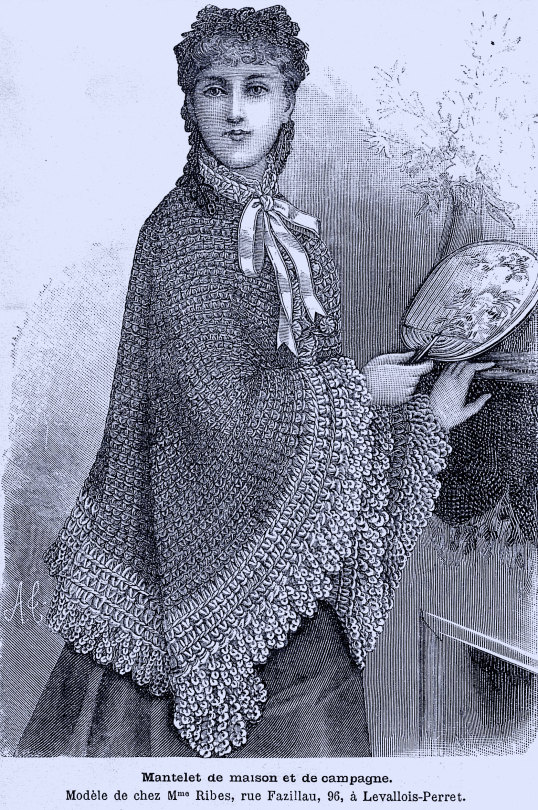
La Mode illustrée, no. 2, 14 janvier 1894, Paris. Mantelet de maison et de campagne. Modèle de chez Mme Ribes, rue Fazillau, 96, à Levallois-Perret. (Laine nécessaire: 590 gr.) Ville de Paris / Bibliothèque Forney
Instructions:
Ce mantelet est fait avec de la laine mastic et un gros crochet de bois; on garnit son bord inférieur et l'encolure avec quelques tours faits en laine bleue; on ferme le mantelet avec des boutons recouverts en laine, des bouclettes de boutons au crochet et un ruban de satin passé au travers des mailles de l'encolure. On travaille depuis l'encolure, en allant et revenant sur une chaînette de 30 mailles:
1er tour. — On passe la plus proche maille, puis toujours 1 maille simple sur la maille suivante.
2e tour. — 1 maille en l'air, — 2 mailles simples sur la plus proche maille simple, — 6 mailles simples sur le côté de devant des 6 plus proches mailles, — 3 fois alternativement pour une augmentation 3 mailles simples sur la maille suivante, — 6 mailles simples comme auparavant sur les 6 plus proches mailles; — on termine en faisant 2 mailles simples sur la dernière maille.
3e au 25e tour. — 1 maille en l'air, — 2 mailles simples sur la 1re maille simple, — puis toujours 1 maille simple sur le côté de devant de la plus proche maille; mais sur la maille de milieu de chaque augmentation on fait une augmentation semblable à la précédente, et sur la dernière maille simple, 2 mailles simples (le 4 derniers tours sont faits avec de la laine bleue). — On garnit ensuit avec de la laine bleue, d'abord le bord de devant de gauche en allant et revenant pour fair 2 tours de mailles simples, et le bord de droite avec un tour de mailles simples; on fait sur ce dernière tour, toujours alternativement, 1 maille simple, — 2 mailles en l'air, — 1 demi-bride, — 1 bride sur la plus proche maille; — on passe 1 maille, et en continuant au bord inférieur*: 1 maille simple sur la plus proche maille, — 7 mailles en l'air, — 1 maille-chaînette sur la 3e de ces mêmes mailles, — 2 mailles en l'air; — on passe 1 maille; — on recommence depuis*. — Ce fait sur les mailles de la chaînette à l'encolure, 3 tours avec de la laine bleue; le premier de ces tours est traversé par le ruban:
1er tour. — 1 maille simple sur la plus proche maille, — toujours alternativement 5 mailles en l'air. — 1 maille simple sur la 2e maille suivante.
2e tour. — 3 mailles en l'air, — toujours alternativement 1 maille-chaînette sur la maille du milieu des 5 plus proches mailles en l'air, — 1 maille en l'air.
3e tour. — Toujours alternativement 3 mailles en l'air, — 3 mailles-chaînettes sur les 3 mailles suivantes. Pour les bouclettes formant des boutonnières, on ferme en cercle 20 mailles en l'air, on les noue au milieu.
—
This cloak is made with mastic wool and a large wooden hook; its lower edge and the neckline are trimmed with a few turns made of blue wool; the cloak is closed with buttons covered in wool, loops of crocheted buttons and a satin ribbon passed through the stitches of the neckline. We work from the neckline, going back and forth on a chain of 30 stitches:
1st round. — Pass the nearest stitch, then always 1 single stitch on the next stitch.
2nd round. — 1 chain stitch, — 2 single stitches on the closest single stitch, — 6 single stitches on the front side of the 6 closest stitches, — 3 times alternately for an increase 3 single stitches on the next stitch, — 6 single stitches as before on the 6 nearest stitches; — we finish by making 2 single stitches on the last stitch.
3rd to 25th rounds. — 1 chain stitch, — 2 single stitches on the 1st single stitch, — then always 1 single stitch on the front side of the nearest stitch; but on the middle stitch of each increase we make an increase similar to the previous one, and on the last single stitch, 2 single stitches (the last 4 rounds are made with blue wool). — We then garnish with blue wool, first the left front edge going back and forth to make 2 rounds of single stitches, and the right edge with a round of single stitches; work on this last round, always alternately, 1 single stitch, — 2 chain stitches, — 1 half double crochet, — 1 double crochet on the nearest stitch; — pass 1 stitch, and continuing to the lower edge*: 1 single stitch on the nearest stitch, — 7 chain stitches, — 1 chain stitch on the 3rd of these same stitches, — 2 chain stitches air; — pass 1 stitch; — we start again since*. — This done on the chain stitches at the neckline, 3 rounds with blue wool; the first of these turns is crossed by the ribbon:
1st round. — 1 single stitch on the closest stitch, — always alternately 5 chain stitches. — 1 single stitch on the next 2nd stitch.
2nd round. — 3 chain stitches, — always alternately 1 chain stitch on the middle stitch of the 5 closest chain stitches, — 1 chain stitch.
3rd round. — Always alternately 3 chain stitches, — 3 chain stitches on the next 3 stitches. For the loops forming buttonholes, we close in a circle 20 stitches in the air, we knot them in the middle.
#La Mode illustrée#19th century#1800s#1890s#1894#periodical#fashion#fashion plate#retouch#description#instructions#knit#crochet#cape#ribbon#Ribes#country#mantle#mantelet
50 notes
·
View notes
Text
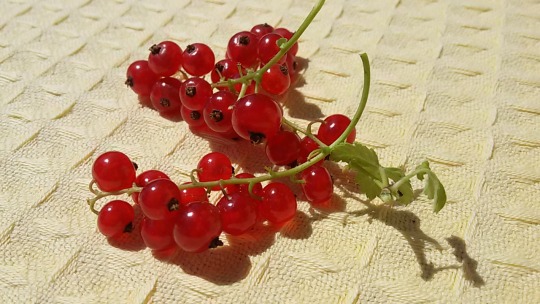
9 notes
·
View notes
Text

Château de Ribes, Velay region of France
French vintage postcard
#postkaart#carte postale#french#briefkaart#velay#old#sepia#château de ribes#france#postkarte#vintage#postal#photography#de#ephemera#postcard#tarjeta#photo#ribes#ansichtskarte#region#chteau#historic
2 notes
·
View notes
Text


3 notes
·
View notes
Text

Red-Flowering Currant (Ribes sanguineum) near Lake Washington
8 notes
·
View notes
Text
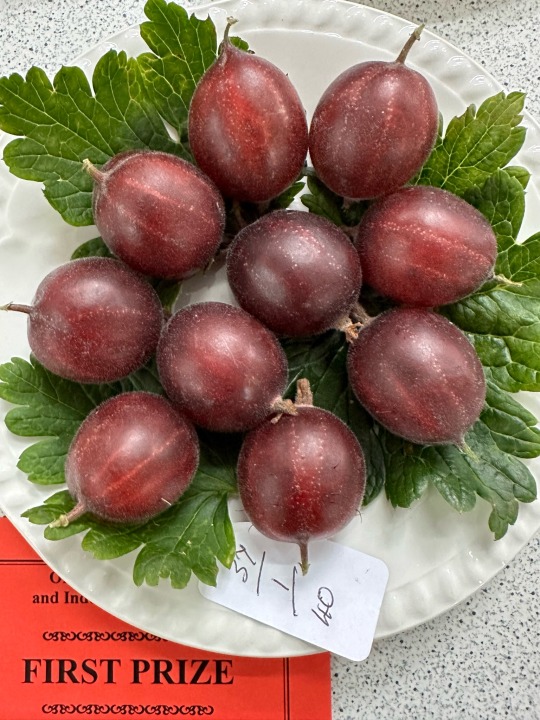
Plant of the Day
Friday 1 September 2023
Gooseberries are native to the temperate areas of Eurasia and North Africa and come in four fruit colours; red, white, green and yellow. This successful show entry shows a purple-fruited variety of Ribes uva-crispa (gooseberry) and cultivars of this colour could be ‘Hinnonmaki Red’, ‘Martlet’, ‘Whinhams Industry’ or ‘May Duke’.
Jill Raggett
70 notes
·
View notes
Text




Still life with fruit
#ribes#cherry#strawberry#ciliegie#fragola#peach#food#fruitart#still life#still life photography#photography#bw photoshoot#photoshop#studio shot#italian
3 notes
·
View notes
Video
n230_w1150 by Biodiversity Heritage Library
Via Flickr:
Monographie; ou, Histoire naturelle du genre groseillier, contenant la description, l'histoire, la culture et les usages de toutes les groseilles connues Paris,P. Dufart,1829. biodiversitylibrary.org/page/15307184
#Ribes#Saxifragaceae#Mertz Library#The New York Botanical Garden#bhl:page=15307184#dc:identifier=http://biodiversitylibrary.org/page/15307184#flickr#botanical illustration#scientific illustration#Ribes Alpinum#Mountain currant#alpine currant#currant#currants#fruit
0 notes
Text
https://stock.adobe.com/it/contributor/208162194/Patrizia

"Uhè! Uhè! Eccomi qua, son Pulcinella sul babà."
Su Adobe Stock.
#fumetto#illustration#pulcinella#food#comics#illustrazione#pasticceria#adobe stock#babà napoletano#babà al rum#colorazione digitale#cibo#ricetta#dessert#lavoro#tradizione italiana#kiwi#ribes#arte#design#desire#clip art#icona#buffo#spiritoso#napoli#pasticcino#festa#happy birthday
0 notes

